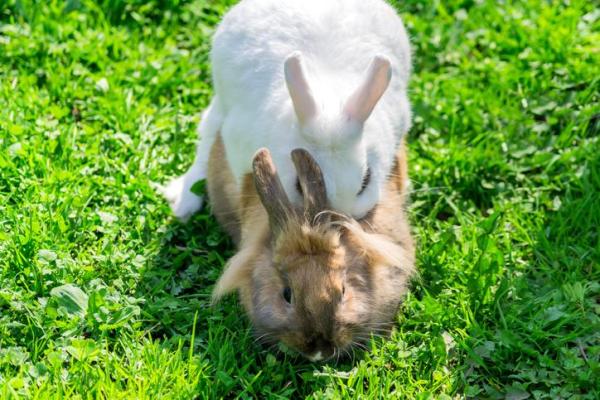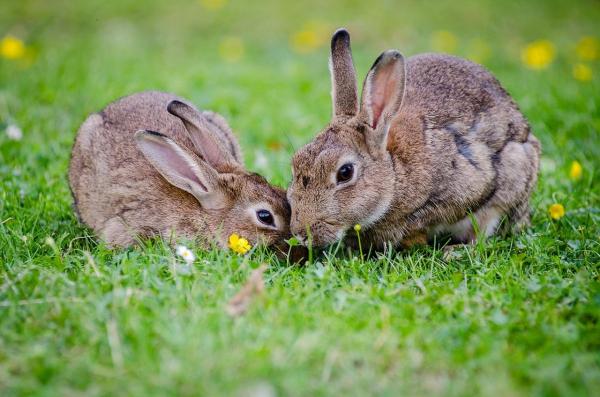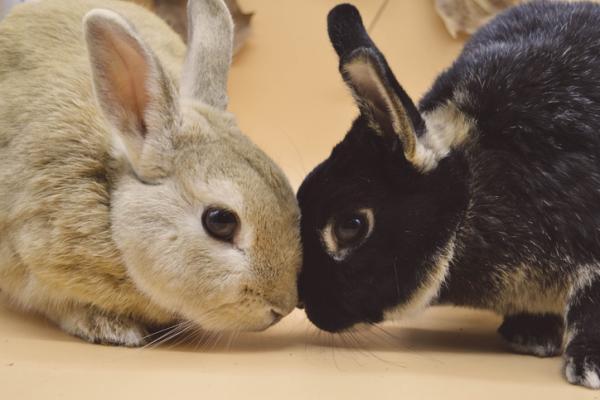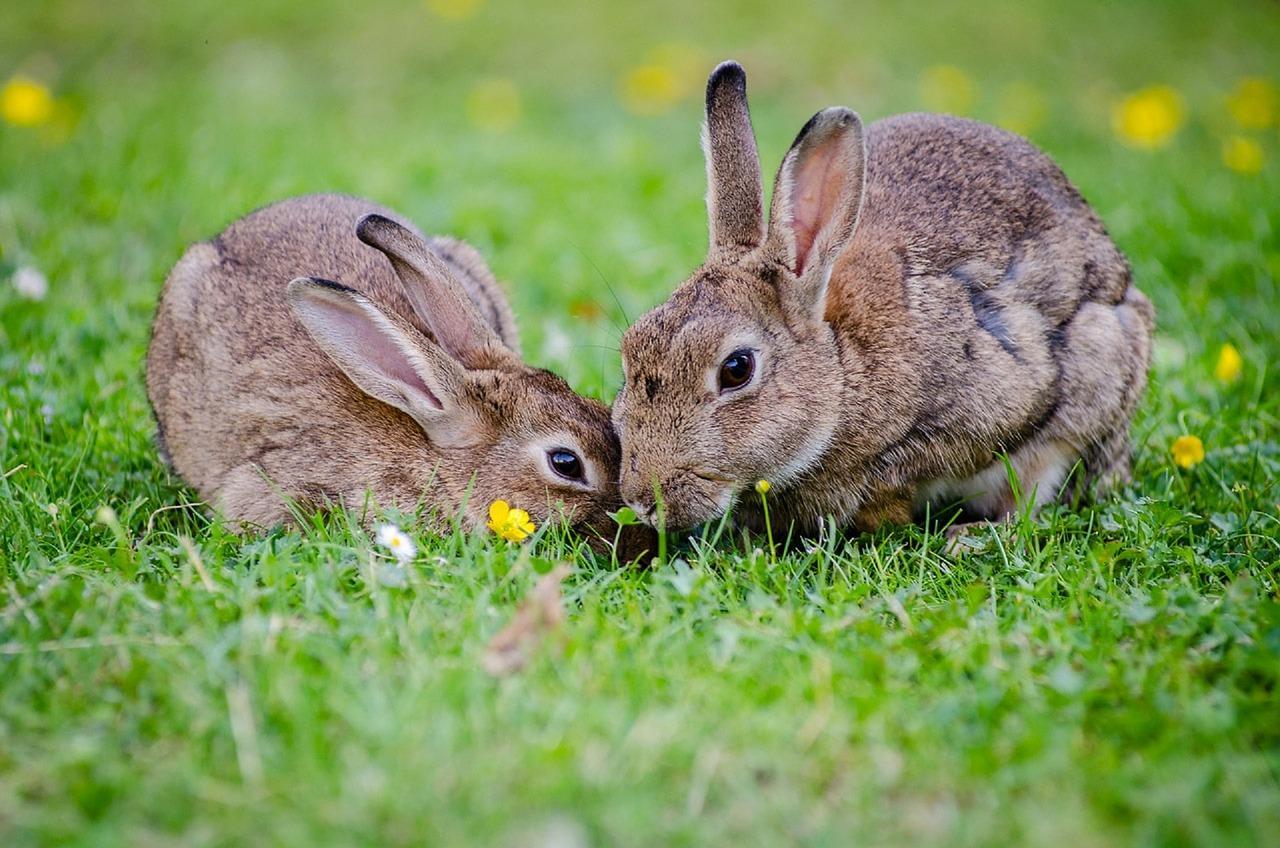How Do Rabbits Mate?



See files for Rabbits
There is a reason for the term ‘breeding like rabbits’. Their reputation for prolific reproduction is not unfounded. They mature sexually early compared to some other mammals, they are receptive to mating for long periods and their mating act itself is relatively quick. For some countries, this has become a significant problem. Introduction of the European Rabbit to Australia in the 19th century has resulted in numerous problems. Their ability to reproduce quickly meant they became an invasive species and hurt the local ecosystems.
For domestic rabbits, their mating habits can also be disruptive. If you keep rabbits together you want to be able to keep them alive and healthy. Rabbit pregnancy can put strain on your resources and make this difficult. AnimalWised looks into how do rabbits mate? Before we do, we suggest your sterilize your rabbits. This is not just to prevent pregnancy, but to take advantage of the other benefits we discuss below.
Reproduction of rabbits
Rabbits breed so prolifically for a number of reasons. As with all animal species, they have evolved and adapted so they can continue the species. Rabbits have just been particularly good at it. Their large reproductive capacity is, in part, due to the early age at which both females (does) and males (bucks) reach sexual maturity. Female rabbits do not have a heat cycle in the same way as other animals. Rather, they are able to reproduce during the majority of the year.
Female rabbits also do not need to be ovulating as other mammals do. They have something known as ‘induced ovulation’. This means that an egg is released for fertilization during the act of mating, triggering by the mounting of the male. This can happen year round, stopping when the rabbit becomes pregnant.
Another reason rabbits can breed so much is that they are able to become pregnant almost immediately after they give birth. This isn't recommended, however. It will put a lot of strain on the rabbit and can affect the rearing of their litter. In fact, you shouldn't have male rabbits around females after they get pregnant and especially after they give birth. There is also some anecdotal evidence to support a rabbit having the ability to be pregnant with two litters at the same time, but it is rare if so.
Bucks do not have a heat cycle, but sexually active throughout the year. When they are wanting to mate, they develop certain behaviors such as marking with urine, mounting of objects, restlessness, biting, destruction and general aggression. Female rabbits can present similar behavioral issues.
Considering how much rabbits breed, it is important to bear in mind their litters have a high mortality rate. Not all litters will come to term and rabbits will eat miscarried young. Not all copulations will end in fertilization. One of the reasons for high mortality reates is that rabbis are very sensitive to stress in both the wild and domestic environments.
At what age do rabbits breed
Rabbits are sexually precocious animals, meaning they reach sexual maturity relatively early. This will occur between 4 and 6 months of age. The length of time it takes to reach sexual maturity depends on their breed and sex. Male rabbits will reach maturity a little later than females and some breeds take longer than others.
Both male and female domestic rabbits have a life expectancy of around 8 to 10 years. Size may play some bearing as dwarf rabbits are thought to generally live a little longer. Both males and females can reproduce throughout their entire lifespan, although older females may find it more difficult and it can put a heavy strain on their health.
In captivity, sterilization is recommended for both male and female rabbits. You can separate males and females, but the quickness with which they can mate means you have to be very careful when they are around each other. However, sterilization has other benefits for the rabbits. Rabbits have a high rate of uterine tumors. As spaying removes the uterus, this should cut the possibility of developing them to 0%.
Hormones dictate a rabbit's need to mate, but they can also lead to aggression and other behavioral problems. Sterilization reduces these nuisance behaviors. An unsterilized rabbit can generate stress, confrontations with other rabbits and generally affect their quality of life. If you do not sterilize a rabbit, you will have to find suitable places to rear the kits (baby rabbits).
When should you sterilize a rabbit?
When you adopt a rabbit you will need to take them to the veterinarian for a general health examination. They can look out for any signs of illness or infestation. Not all veterinarians will be specialized in rabbit care, so you should make sure they have the right experience to perform the sterilization procedure. Male rabbits should be sterilized as soon as their testicles descend. Female rabbits should generally be sterilized after about 6 months.

Heat cycle in rabbits
As we state above, rabbits don't have a heat cycle in the same way as other domestic mammals such as cats or dogs. Since they are sexually active throughout the year, their behavioral problems related to sexual activity manifest regularly.
The symptoms of both male and female rabbits in heat are very similar. They include:
- Aggression
- Marking with urine
- Nervousness
- Excessive biting of their hutch
- Destruction of objects
Females may also have a discoloration of their vulva, but it is important to note they should not be bleeding. Due to induced ovulation, the rabbit does not have an estrus cycle where the eggs descend and are eliminated by the body. If you see your rabbit has blood on their genitals, then this is a sign of a health problem and you should take them to the vet for diagnosis.
How do rabbits mate?
Although there differences between rabbit breeds in terms of sexual development, the mating process is essentially the same for all rabbi species. Courtship and mating will differ between wild and domestic rabbits, the latter being controlled by human guardians. However, the general rabbit mating ritual is as follows:
- As soon as the male registers the female, he will initiate this approach.
- The male may smell the female, especially in the anogenital area. The female may do the same.
- After smelling, they may stay still or move around in a circle.
- The male runs around the female until he is able to mark her. This involves passing over her chin and sometimes urinating on her a little.
- If the female rabbit is receptive, she will lie down to encourage mounting.
- If the female is not receptive she may run away or even display aggression.
- The rabbit will mount her for a few seconds with quick rhythmic pelvic movements.
- For purchase, the male will hold the flanks of the female with his front legs and bite her neck.
- In the final movement, he will ejaculate, emit a noise and drop to the side of the female.
- If the rabbits are left together it is likely they will repeat the mating.

How many times can a rabbit mate in a day?
Male rabbits can mate many times in the same day. One study looked at the amount of copulations male rabbits had over an 8 hour period[1]. The males were in groups and the findings saw that they had between 5 and 40 copulations over this period. They were unable to determine how often ejaculation took place. However, it was registered in a different study that rabbits could perform 6 ejaculations in a 30 minute period. The first ejaculation took place 19 seconds after the doe was presented to them. This implies that rabbits are not only fast, but that males have the potential to impregnate many females during a very short period.

Rabbit pregnancy
Now we know how rabbits mate with each other, we can let you know a little more about rabbit pregnancies. The gestation period of a rabbit litter lasts about 30-32 days. At the end of this time, the rabbit will give birth to a litter of around 1 to 5 kits. There are cases where more have been born (the record being 24!), but this is the average amount.
When the doe is ready to give birth, she will look for a secure nest. Once the kits are born, they will be fed with breast milk for about a month, although baby rabbits will usually start to eat solids around 18 days. As with any new life, this time is precious and very important for the well-being of the rabbits. Only after about 8 weeks of age should you take the babies away from their mother.

If you want to read similar articles to How Do Rabbits Mate?, we recommend you visit our Gestation category.








